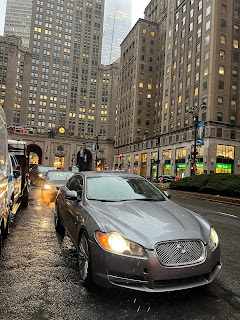The Congestion Crisis at LGA's Terminal B: The Uber Traffic Jam
LaGuardia Airport, one of New York City's major gateways to the world, has historically seen its share of challenges. But in recent years, Terminal B has faced an unexpected congestion issue, not due to plane traffic, but rather because of the deluge of Uber vehicles.
The rise of rideshare platforms has transformed the way we travel. Gone are the days of hailing cabs or waiting in long taxi queues. With a few taps on a smartphone, travelers can have a car waiting. At locations like LGA's Terminal B, however, this convenience has come at a cost. Thousands of Uber drivers converge at the terminal, all vying for passengers and causing gridlocks that were once unimaginable at an airport of LGA's stature.
The primary issue is the sheer volume of Ubers attempting to enter the terminal simultaneously. This has resulted in inaccessibility at both the entry and exit points of Terminal B. But the ripple effects don’t end there. The parking garage, once a refuge for personal vehicles and short-term parking, is now ensnared in this transport tangle.
For passengers, the appeal of a seamless transition from plane to vehicle is undeniable. But when that process is obstructed by traffic jams, delays, and an overall chaotic environment, the appeal diminishes. Furthermore, for non-Uber travelers and airport staff, navigating through or around this congestion becomes a daunting, often frustrating, task.
The solution, while complex, does hinge on regulation. While Uber has democratized travel and offered flexible employment for many, it is imperative that there is a system in place to streamline the flow of these vehicles, especially in high-traffic zones like Terminal B.
A viable proposal would be to implement a system where Uber drivers can only enter the terminal vicinity when they have a confirmed passenger awaiting pickup. This would drastically cut down on the number of vehicles merely "hovering" in the area in hopes of acquiring a fare. Uber, with its advanced tech infrastructure, can implement a geo-fencing mechanism. Drivers outside this virtual boundary would receive a notification only when a passenger in Terminal B needs a ride. Once the ride is confirmed, the driver would be allowed access.
To complement this, a virtual queue can be established. Drivers can wait in designated areas away from the airport and be alerted when it's their turn to approach Terminal B. This would ensure a continuous but regulated flow of vehicles, preventing the bottlenecks we currently witness.
Additionally, a public awareness campaign, in collaboration with LaGuardia Airport, can inform travelers of the best times to book their rides, or even promote the use of shared rides to decrease the number of individual cars required.
This isn't just about improving the efficiency of Uber pickups but about ensuring that all travelers, whether they are rideshare users or not, can have a smooth experience at Terminal B. LGA is more than just a transport hub; it's a representation of New York City's commitment to world-class service and connectivity. By addressing the Uber congestion, we take a significant step in upholding that reputatio


Comments
Post a Comment